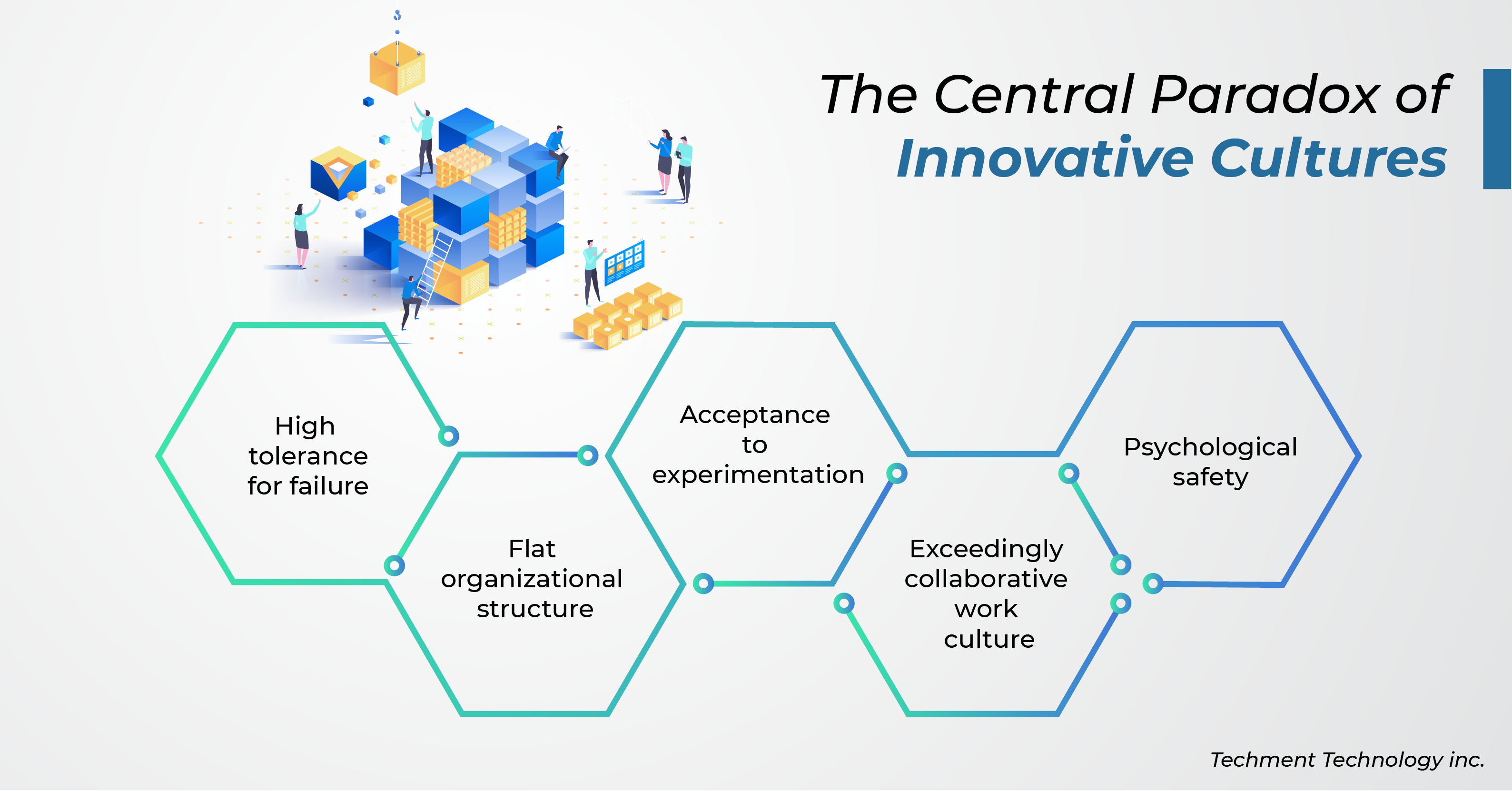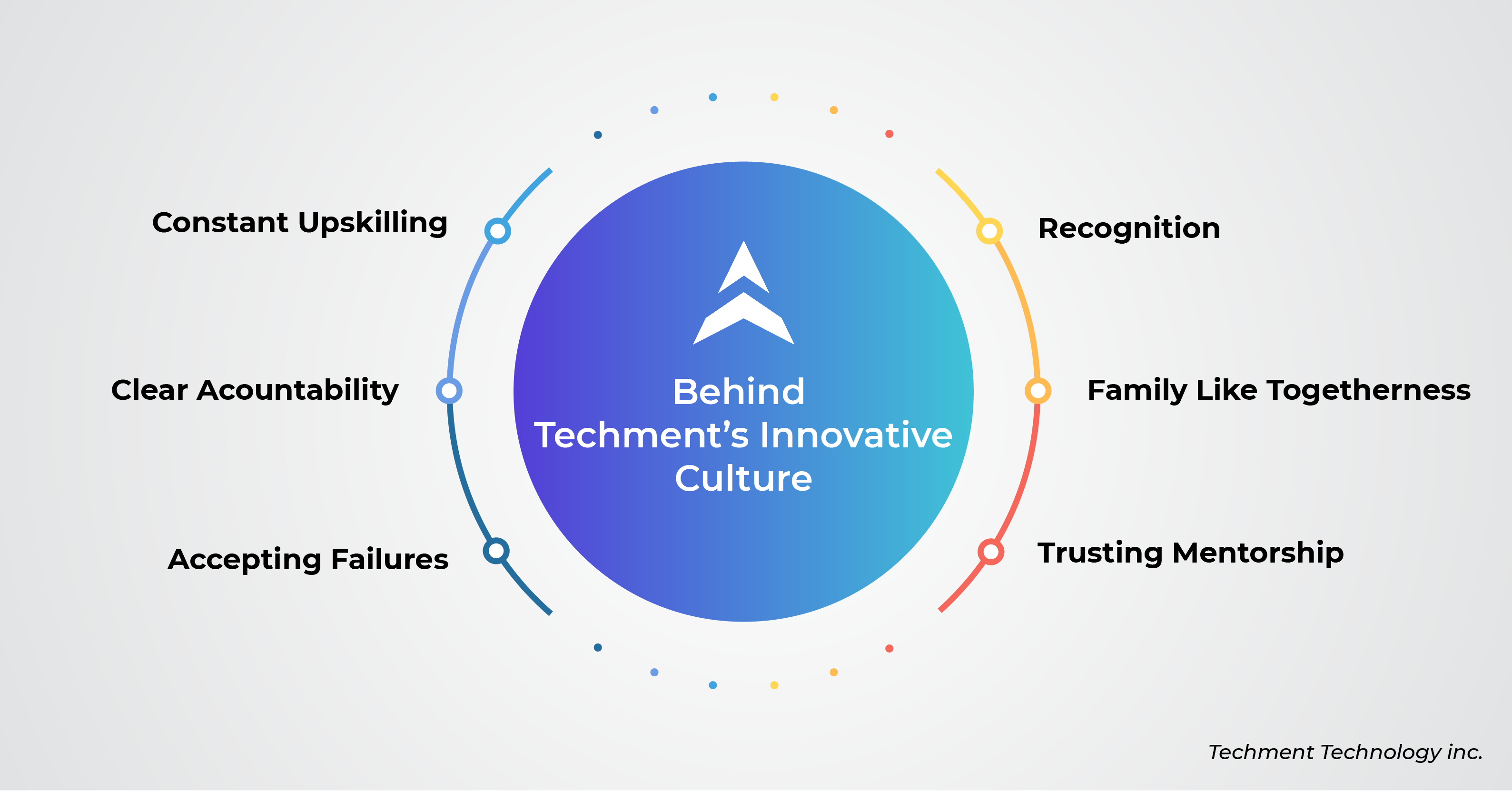Every organization and leader wants to create an innovative culture, yet it remains a mystery. Why is something so universally adored, that involves fun and experimentation, so hard to create?
In this article, we have tried to decode the phenomenon of an innovative culture with our experience and learning at Techment.
The Central Paradox of Innovative Cultures
The research on the subject captures the essence of innovative cultures as:
- High tolerance for failure
- Flat organizational structure
- Acceptance to experimentation
- Exceedingly collaborative work culture
- Psychological safety

Sometimes, even organizations who have all these qualities fail at being innovative; and that is the irony!
Decoding the Irony
A company has a culture of no tolerance for incompetence, indiscipline, encourages blisteringly candid feedback, and strict accountability. Is it an innovative one? Let’s explore more.
Professor Gary P. Pisano, Harvard Business School, raises some interesting points in his research on innovative cultures. He points out the counterintuitiveness of bringing together these seemingly opposite cultural qualities, which makes innovative cultures so difficult to create.
Reconciling the Opposites
- Failure and Incompetence
Spectacular failures such as Google Glass, and Amazon fire phone, come from the most innovative companies because they have a high tolerance to failure.On the other hand, Amazon ranks employees on a forced curve, where the bottom part of the distribution gets culled. The unacceptability of incompetence finds its root in the experimentative culture of an innovative company that often takes a leap of faith, and the failure must not be simply due to bad management or imperfect analysis. With competent people, failure comes with valuable learning, the cherished outcome. Judging if a fiasco was due to bad judgment or was a genuine one is also very challenging, and harsh policies may make people reluctant to take a risk. - Disciplined Experimentation
There is an ocean of difference between making a decision based on a hunch, and one backed by disciplined due diligence. Discipline ensures a careful selection of experiments based on the potential learning outcomes. A culture that lacks discipline may never be consistently innovative. - Psychological Safety with Candor
People should feel safe enough to speak their minds; it is essential as it helps companies avoid failures and learn faster. The other part of the equation is rejection or critique of new proposals, ideas, and hypotheses without hesitation. Organizations that develop a culture of sharp and candid feedback tend to be more innovative. - Collaboration with Accountability
Best organizations have a seamless culture of collaboration, but it also comes with a trap. It is the development of collective responsibility that can prove dangerous as often collaborations get confused with consensus.A manager can be entrusted with a new project, he is free to collaborate with resources within and outside the organization, but ultimately he must be responsible for the outcome. Innovation demands accountability and better decision-making. - Flat Organization but Strong Leadership
It seems that a flat organization, with no hierarchy, may have diluted leadership. Maybe, but not in an innovative company. A flat organization gets the benefit of diverse ideas and since there are so many different views, it is essential to have strong leadership to prevent the organization from sinking into chaos.Flat structure helps leaders stay close to the action and interact at the root level. Leaders must use this opportunity to communicate their vision and give context to things they are doing.
Reasons Behind the Success of Techment’s Innovative Culture
As a young company, Techment had a tough challenge of building a culture and developing values that take deeper roots as the organization grows. One thing that favored us was our compact size and flat structure. It is relatively easy to be innovative, establish accountability and share candid feedback as personal rapport is still strong.
For us, the challenge is to recreate the innovative culture in tandem with our growth and carry forward the innovation momentum. A few things we have been successful culturally are:
a) Acceptance to Experimentation and Failures
b) Upskilling to Strengthen Competence
c) Transparent Accountability
d) Recognition of Innovative Ideas
e) Family like Togetherness: Provides Psychological Safety and acceptance to candid Feedbacks
f) Mentoring for Greater Trust

For many organizations like us, which are growing rapidly, the leadership imperative is to create a culture that moves a little ahead of the organization and with a vision, and not vice-versa.
Leading a Sustainable Innovative Culture
It is challenging to lead an innovative culture as it involves a combination of seemingly contradictory behaviors and is thus highly challenging to walk the innovation tightrope. In essence, it is a balancing act, and here is how I summarize it:
- Reconciliation of thinking that considers fun, experimentation, and discipline as contradictions. Experimentation backed by utmost commitment propels innovation forward.
- Celebrating Learning Not Failures: Even while taking a leap of faith, trying out new things, the aim should be to have learning that is not otherwise possible. Thus, we are celebrating learning, not failures.
- Keeping Culture Ahead of the Organizational Curve: Companies change with their ambient business environments, and leaders must guide the culture to develop in advance and resonate with the fluid organizational identity.
The key to creating lasting innovative culture is to manage these contradictions.
 All Posts
All Posts


